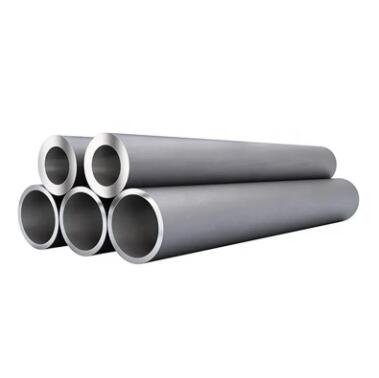Navigating Precision: Considerations and Precautions in Welding 904L Stainless Steel
2024-01-11
Introduction:
Welding 904L Stainless Steel is a meticulous process that demands a deep understanding of the alloy's unique composition and properties. As a material renowned for its exceptional corrosion resistance, 904L Stainless Steel requires specific considerations and precautions during the welding process to ensure the integrity of the weld and the preservation of its distinctive qualities. In this blog post, we'll explore the key factors that must be taken into account when welding 904L Stainless Steel.
1. Preheating and Interpass Temperature:
- 904L Stainless Steel, being a high-alloy austenitic stainless steel, benefits from preheating before welding to reduce thermal stresses and prevent cracking.
- Maintaining the appropriate interpass temperature between welding passes is crucial to prevent the alloy from cooling too quickly, which can lead to sensitization and reduced corrosion resistance.
2. Shielding Gas Selection:
- The choice of shielding gas is critical in preventing oxidation and ensuring a clean weld. Typically, argon or a mixture of argon and helium is used as a shielding gas for welding 904L Stainless Steel.
3. Low Heat Input:
- To preserve the corrosion resistance and mechanical properties of 904L Stainless Steel, it is essential to keep the heat input low during welding. This helps prevent excessive grain growth and maintains the alloy's integrity.
4. Use of Filler Material:
- Selecting the right filler material is crucial for achieving a strong and corrosion-resistant weld.
- Matching or slightly overalloyed filler metals, such as ER385 (often referred to as 904L filler), are commonly used to ensure compatibility with the base metal.
5. Avoiding Contamination:
- Contamination, such as from carbon steel or tools used on other materials, must be strictly avoided during the welding process. Cross-contamination can lead to the formation of undesirable intermetallic phases.
6. Post-Weld Heat Treatment:
- While not always necessary, post-weld heat treatment (PWHT) may be applied to relieve residual stresses and improve the mechanical properties of the welded joint.
- PWHT is particularly beneficial when welding thick sections of 904L Stainless Steel.
7. Proper Joint Preparation:
- Achieving a precise and clean joint preparation is essential for successful welding. Proper cleaning and removal of any contaminants from the joint surfaces contribute to the quality of the weld.
8. Welding Technique:
- TIG (Gas Tungsten Arc Welding) is often the preferred welding technique for 904L Stainless Steel due to its precision and control over heat input.
- Techniques like pulsed arc welding can also be employed to maintain low heat input, minimizing the risk of overheating.
Conclusion:
Welding 904L Stainless Steel requires a meticulous approach, with careful attention to detail and adherence to specific precautions. By considering factors such as preheating, shielding gas selection, low heat input, and proper joint preparation, welders can ensure that the corrosion-resistant properties of 904L Stainless Steel are preserved, making it a reliable choice for critical applications in corrosive environments. As industries continue to rely on this high-performance alloy, the precision and expertise involved in its welding process play a vital role in maintaining the integrity of structures and components in diverse and demanding settings.


